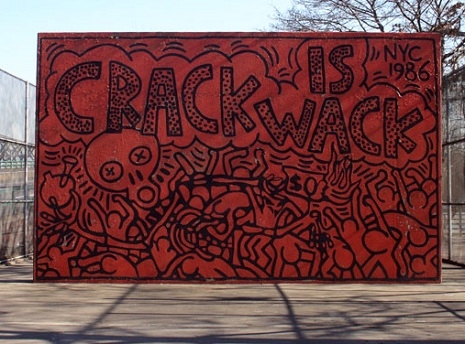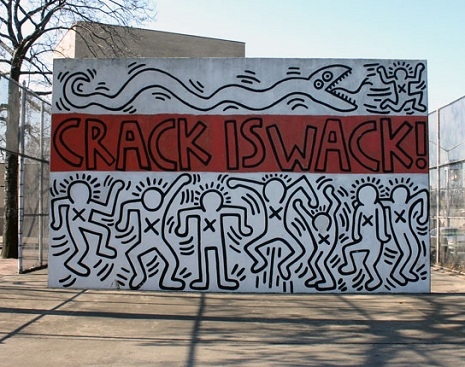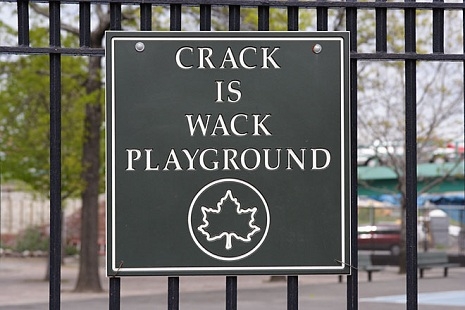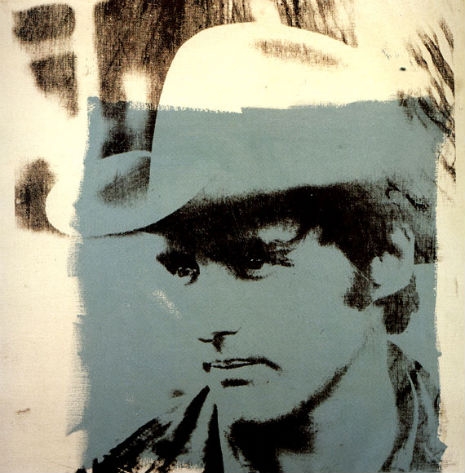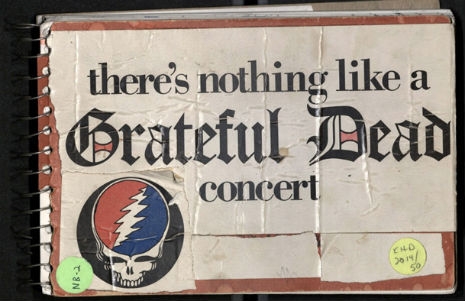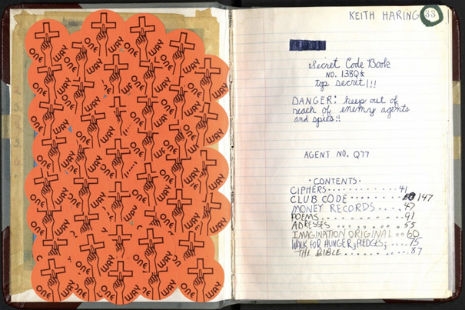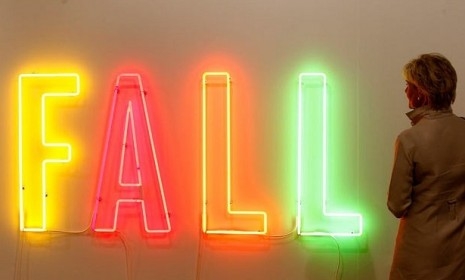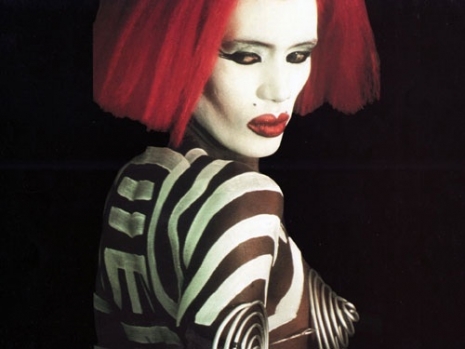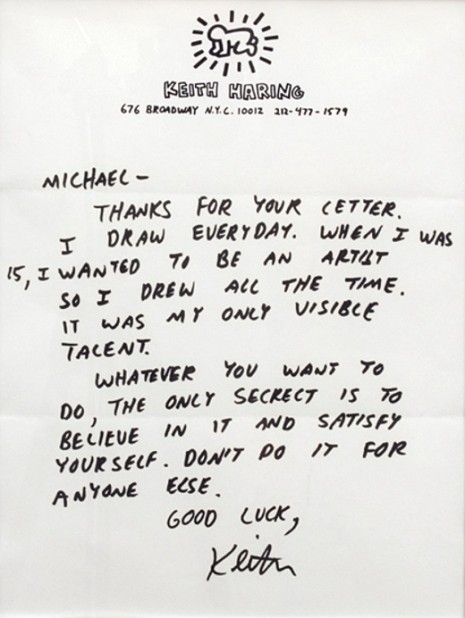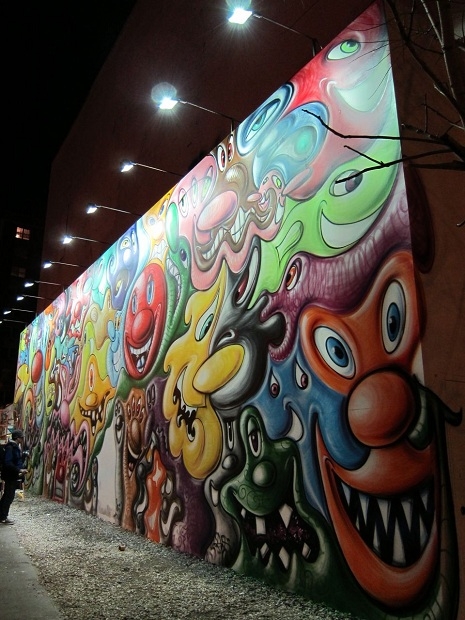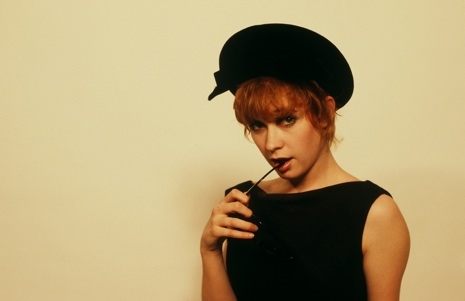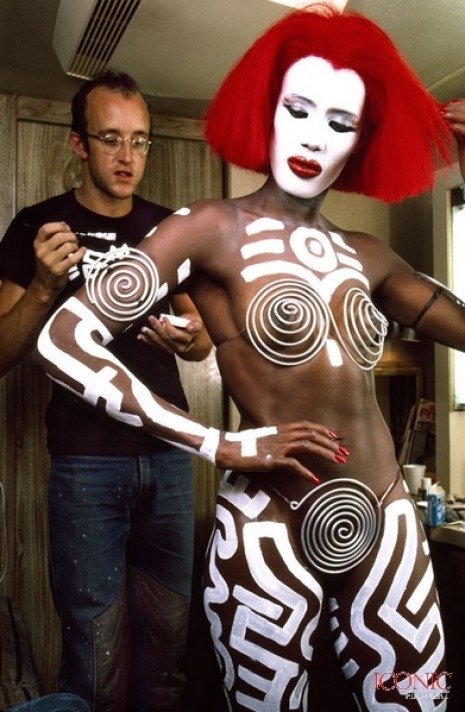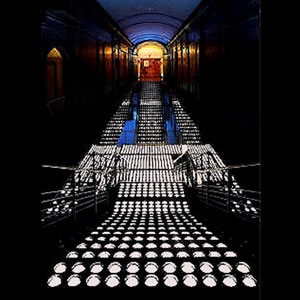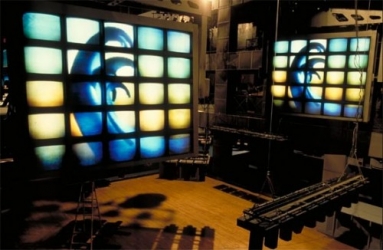
I was going to post a short notice about these two sure to be interesting evenings at NYU this week, but I thought the story told by the press release was worth presenting here in full.
Of mild interest to DM readers, my own tape-recorded recollections of the late Nelson Sullivan are part of this archive (I knew Nelson and rented a tiny room from him for about 6 months in his ramshackle house at 5 Ninth Ave. when I was 21). Robert Coddington, who valiantly cataloged this amazing collection and kept it together, is a friend of mine and someone I hold in high regard. It’s really a tribute to his scholarship and tenacity that this collection is going to be housed at NYU, where it belongs, for future scholars who want to understand what happened “downtown” during the 1980s (I can’t help but to add “...before NYU drove up the property values and forced all of the bohemians out!”). Robert, and the wonderful Dick Richards, the real hero of this story (and a man who should have a documentary made about him) have done history a big favor, they really have.
The 1980s were the plague years in NYC, make no mistake about it. A lot of us had close friends who died. But it was also a fun, decadent and deeply weird time to have been young. Sullivan’s tapes capture that time like literally nothing else could.
Long Days’ Journey Downtown—Nelson Sullivan’s Video Archive Back in NYC After 23 Years
Completing a trek across many miles and more than two decades, a remarkable trove of video tapes chronicling the golden age of New York’s 1980s club scene is back where it was created—in downtown Manhattan. In October, New York University’s Fales Library & Special Collections accepted the Nelson Sullivan Video Archive as a donation from Atlantans Dick Richards and David Goldman, and Robert Coddington of Durham, N.C.—operating collectively as the 5 Ninth Avenue Project.
On April 25, the Fales Library will host a panel discussion to mark the archive’s official entry into its collections. Coddington will talk about Sullivan’s body of work, and how he and his partners worked to preserve it. Several artists featured in the video tapes also are expected to attend and add their recollections of Sullivan and the scene he documented. The event begins at 6 p.m. on April 25 at the Fales Library, third floor, Elmer Holmes Bobst Library, 70 Washington Square South. This event is free and open to the public.
In the early 1980s, Nelson Sullivan began using then-newly available portable video technology to document the highs and lows of downtown’s world of invites, catfights, train wrecks and rising stars. The equipment was heavy and expensive, but night after night Sullivan lugged it along from SoHo to Coney Island and all points inbetween—from huge discos (like Limelight and Tunnel) to tiny dives (like the Pyramid) and private parties (where he circulated with Warhol-era superstars and freshly minted celebrities like RuPaul and Deee-Lite).
Sullivan’s video archive grew rapidly, taking up shelf after shelf in the creaky three-story townhouse he rented in the Meatpacking District (at 5 9th Ave. and Gansevoort, today site of the restaurant 5 9th). And while he accommodated friends’ requests for copies, he jealously guarded the original tapes—confident he would one day devise a way to present them to the world. Finally, in the spring of 1989, Sullivan decided to make the collection his life’s work: He quit his job at the famous Joseph Patelson Music House (just across from Carnegie Hall’s stage door) and set out to launch a public access cable program showcasing his tapes. But tragically, after completing just one episode, he died of a sudden heart attack in the early morning hours of Independence Day. Seven years after it began, Sullivan’s quest to document the downtown scene was over.
Sullivan’s one-of-a-kind archive might have been picked apart by souvenir-hunters—or worse, left on the curb—had it not been for Dick Richards. Though grief-stricken at the loss of his lifelong friend—the two grew up together in rural South Carolina—Richards acted quickly, flying to New York, securing the collection, and shipping it to the Atlanta home he shared with his domestic partner David Goldman and his business partner Ted Rubenstein (co-founder, with Richards, of Funtone USA, which released RuPaul’s first three recordings).
“The video archive Nelson had created was so extraordinary that I knew I had to do whatever I could to save it,” Richards recalls. “What Nelson was doing was entirely unique. When you watch the tapes, you’ll search in vain to find another person who’s video taping these events. With AIDS ravaging the community and changing it forever, his was basically the only personal video testimony of a scene that was rapidly disintegrating.”
Back in Atlanta, Richards publicized the tapes by showing selections on “The American Music Show,” the weekly public access cable program he co-produced with Potsy Duncan and Bud “Beebo” Lowry.
Then, on a 1993 trip to tape the show at Foxy’s Lounge in Chicago, Richards and Goldman met Robert Coddington, who was involved in the Windy City’s club scene and burgeoning Queercore movement. Coddington, 23, longed to learn about the wild days that had preceded his own coming of age in the gay community, and upon hearing about the archive was eager to learn of the lost landscape it revealed.
“As a young gay man at the time, I had this acute sense that I was arriving at a fabulous party—five minutes after the lights came on,” Coddington says. “I knew that AIDS was ripping apart the gay culture that had existed before. I began to ask myself What was that world and what were those people like? Upon experiencing Nelson’s tapes, I began to learn the answers to those questions.”
Beginning in 2001, Richards and Coddington worked together to organize and chronicle the collection, producing four highlight DVDs (“Mad About Manhattan,” “The Club Kids,” “Nelson Sullivan’s Fabulous Friends,” and “Legends of New York”). In 2004, Coddington edited Sullivan’s “My Life In Video” for the New Museum’s East Village USA exhibition, which also featured works by Basquiat, Kenny Scharf, Keith Haring and Nan Goldin. In 2007, Coddington presented and discussed archive highlights at Atlanta’s Eye-Drum Gallery. Richards launched a YouTube channel dedicated to the collection: To date, it has logged more than 750,000 views.
Sullivan’s videos have been shown in more than 20 solo and group shows and film festivals across Europe, Australia, South America and North America. Videographers from Switzerland and France produced short documentary films on Sullivan for Europe’s ARTE channel. Los Angeles-based World of Wonder created a film on Sullivan for Britain’s Channel 4.
But as the collection’s fame spread, its ultimate survival was far from certain. The archive of more than 600 tapes remained boxed in a back room at Richards’ and Goldman’s century-old house in Inman Park (site of the 1864 Battle of Atlanta). Without an institutional “forever home,” the three partners feared the tapes’ initial escape from the dumpster might have been only temporary.
That’s when Sullivan’s videos got a powerful champion in the form of the Fales Library. The addition of the archive brought an exciting new dimension to Fales’ Downtown Collection, which already included the papers of such influential entities as the Gay Cable Network, the Red Hot Organization, Dennis Cooper, Michaelangelo Signorile, Richard Hell and Ande Whyland.
“Nelson Sullivan was the chronicler of the demimonde downtown New York scene,” said Marvin J. Taylor, director of the Fales Library. “He was everywhere that was important at just the right time. But, he was more than that. When Nelson turned his video camera on himself as flaneur of downtown, he found his own artistic, queer, postmodern voice. We’re honored to have Nelson’s videos here at NYU.”
“Seen on the Scene”
Here are a few of the personalities of note featured in the Nelson Sullivan Video Archive. Click on the links to view selected clips.
RuPaul, entertainer
Sylvia Miles, Academy Award nominee
Lady Miss Kier, lead singer of Deee-Lite
Michael Musto, author and columnist
Michael Alig, the “King of the Club Kids,” whose murder of a drug dealer is chronicled in the film “Party Monster”
Marc Shaiman and Scott Wittman, Broadway and film composers
The Lady Bunny, entertainer
Jayne County, transgender punk rocker
Holly Woodlawn, Warhol Superstar and comedian
Quentin Crisp, author
Ethyl Eichelberger, performer
A lecture/screening presented by Robert Coddington will take place on Wednesday April 24 at the Einstein Auditorium in NYU’s Barney Building on Stuyvesant Street. It is free and open to the public and will feature videos of Keith Haring, Rock Steady Crew, RuPaul, Leigh Bowery, Ethyl Eichelberger, Fran Lebowitz, Michael Musto, Lady Miss Kier and more…
The following evening, Thursday April 25th, at the third floor Fales Library at the Elmer Holmes Bobst Library on Washington Square South, there will be a celebration of the life and work of Nelson Sullivan with Michael Musto, Lady Miss Kier, Robert Coddington, drag historian Joe E. Jeffreys, performance artist Flloyd and photographer Paula Gately Tillman.
Both events begin at 6pm.
Swiss television on Nelson Sullivan:






